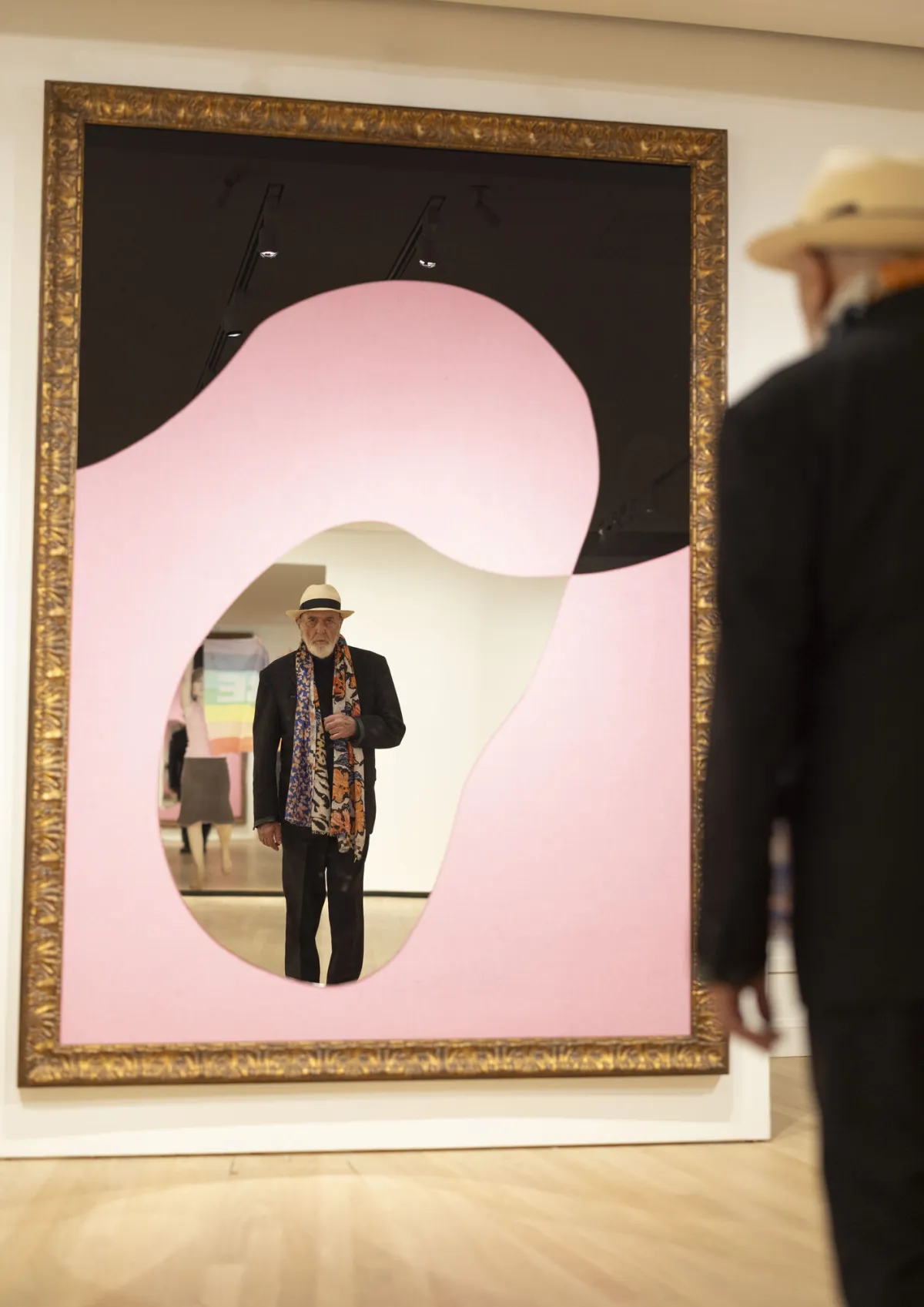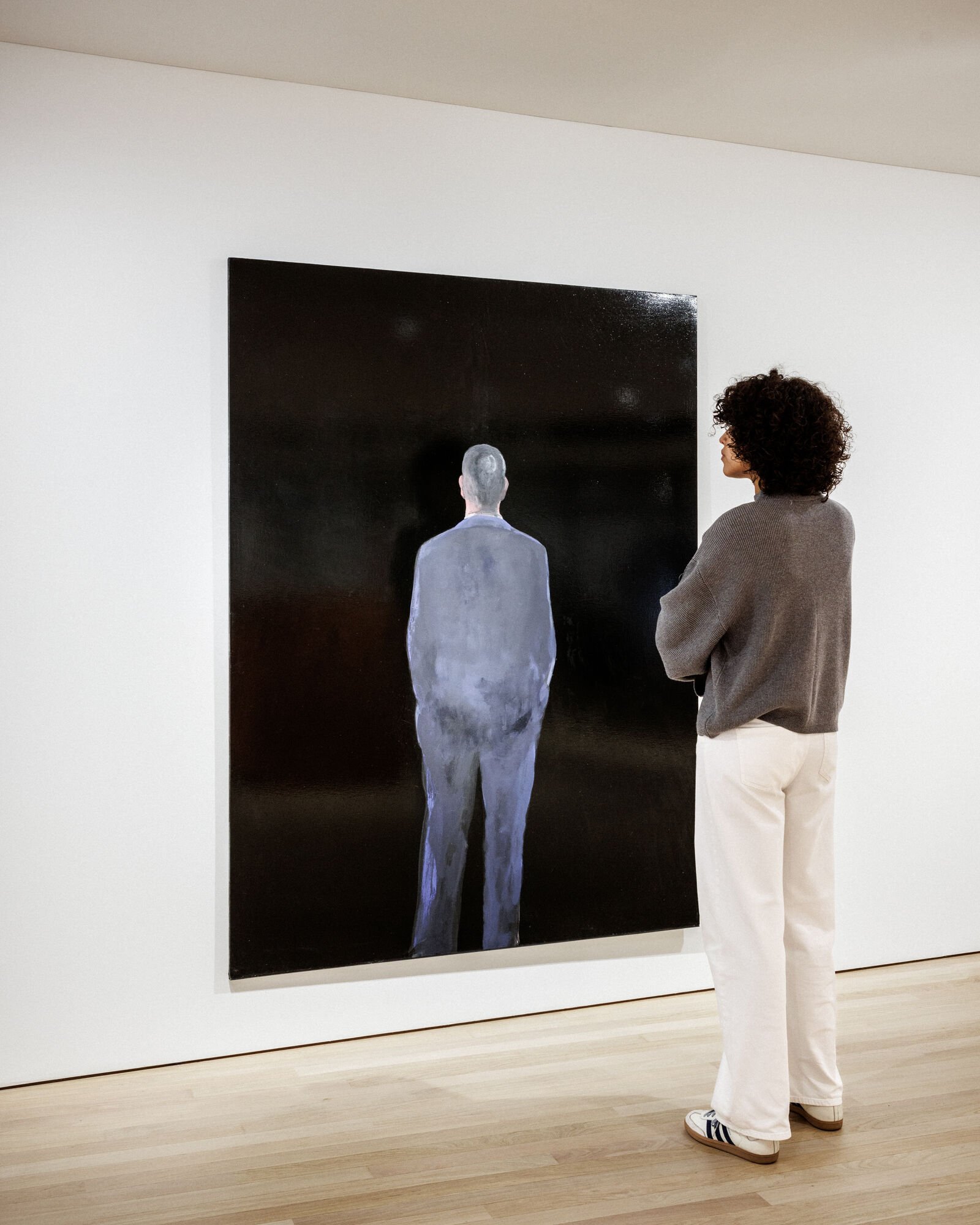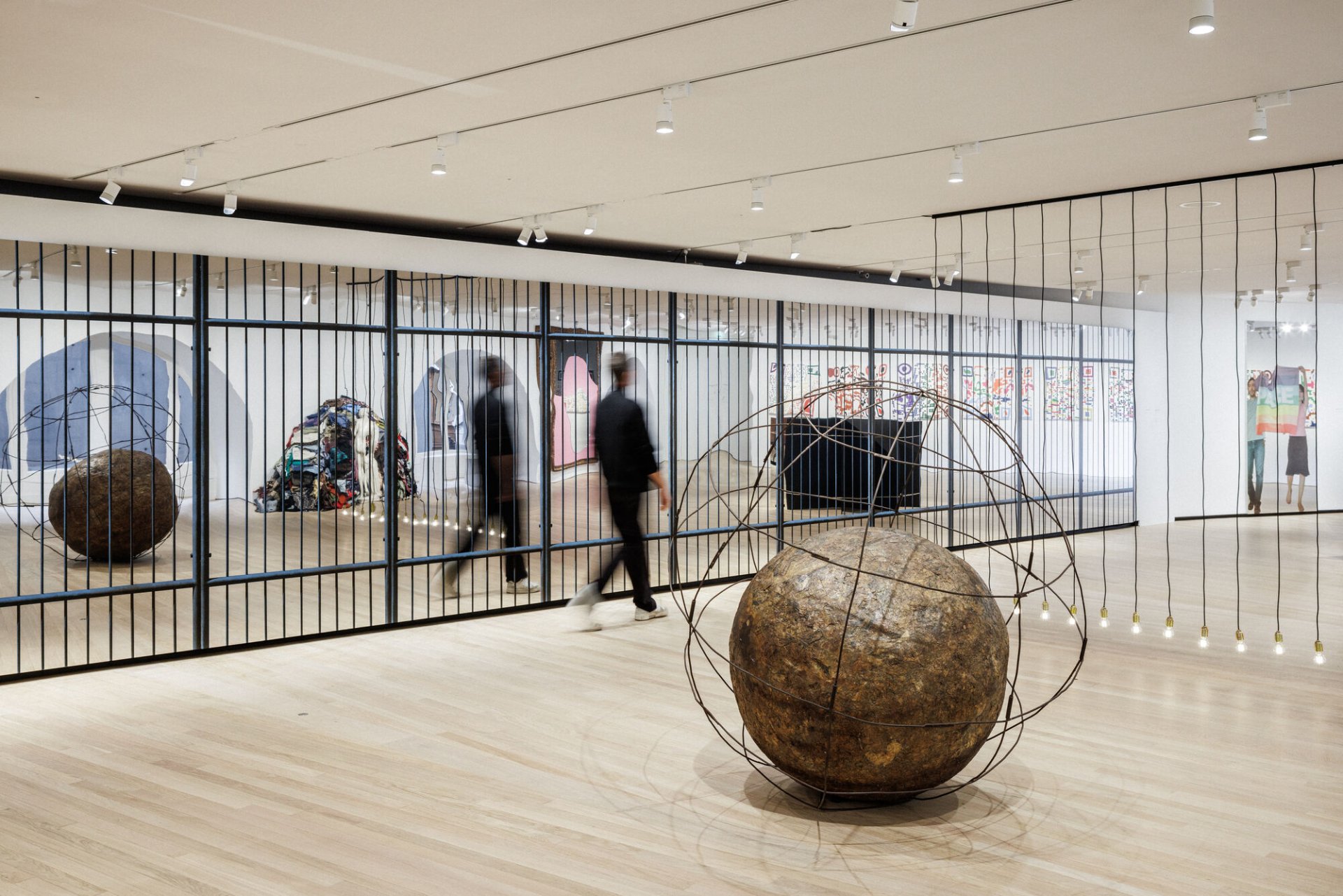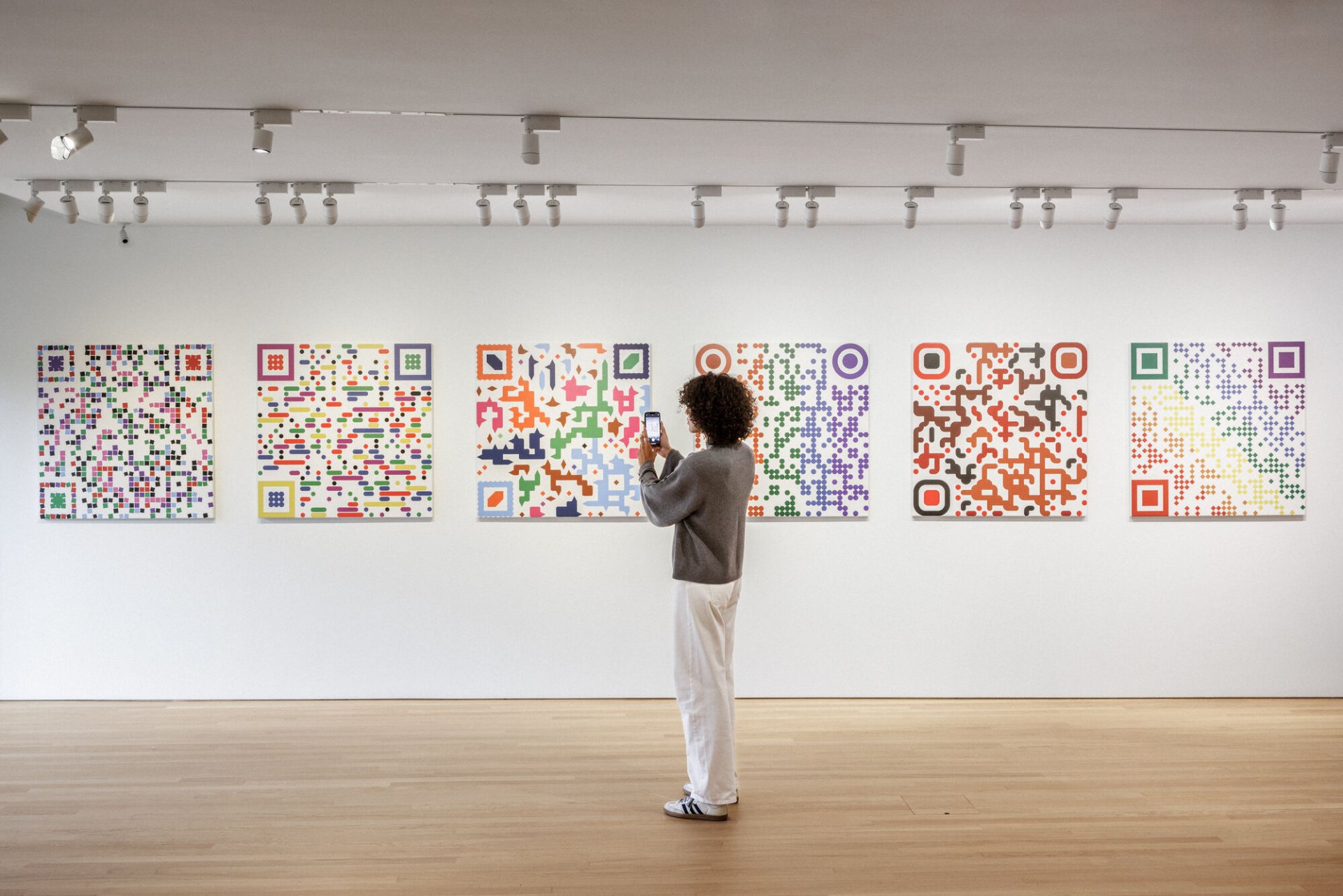
“Arte Povera is not minimal. It’s radical. ” — Michelangelo Pistoletto
Michelangelo Pistoletto works to bring life into art. The artist discloses some of the secrets to his works currently on show in the "Arte Povera" exhibition.
Your practice began with the series Quadri specchianti, the “Mirror Paintings”. What are they about?
The first reflecting work I made, Il presente – Uomo di schiena (“The Present – A Man from Behind”), depicts a silhouette of a back against a reflective black background. I explored different ways of working the canvas searching for a light that would feel as if it came from within the canvas itself. I experimented with gilded and silver backgrounds, but ultimately wasn’t until I used black paint that I had the sensation of seeing a light appear within the work. When I began to approach this image as a self-portrait, my silhouette seemed to lift off the background by itself. And that’s when I realized that everything that I was trying to capture in front of me actually lay behind this silhouette. To expand this possibility offered by painting, I began to use polished metal. This material allowed me to fix a silhouette that reflected exactly what I saw in the work. It had to be as precise and objective as the one revealed by the reflection, and only photography could fulfil that requirement.

In 1966 and 1969, you exhibited Oggetti in meno (“Minus Objects”) in your studio. What do they depict?
The Minus Objects constitute a rupture with the mirror principle. The mirror-painting had become my symbol, the emblem of my style. But I wasn’t looking to have one style. I simply wanted to be phenomenologically useful and to depict something that exists for each one of us. The Minus Objects suggest that a work’s existence is not defined solely by its materiality or visual representation, but also by the fact that you know it. Even in its absence, it exists in you, within your memory. Human memory is essential because human beings are both a physical machine and an engine of mental attraction.
Together with other artists, you rolled the work Mappamondo (1966 -1968), a sphere of newspapers, through the streets of Turin. Why did you do this?
I felt a need to collect all these newspapers, symbols of our present, and to turn them into a ball. When the ball was shown as part of the Minus Objects, it was the only movable one. That’s when I thought to myself: “Why not roll it outside my studio? ” Once I pushed it outside, people on the street came up and began to move the sphere of their own accord, without knowing that it was an artwork. I understood that the sphere itself had the power to represent the concept of “chance”. It’s an expression of chance. It gives rise to a kind of personal competition, in which everyone is trying to direct this sense of chance towards a goal. That’s why I think sports like football are so important. Chance plays a central role in them; two people square off on the pitch, each one trying to control this sense of chance in their favour. What ultimately is a victory? Victory is not a participative act per se, but it does require participation to manifest itself.

As a part of this series, you created the Metrocubo d’infinito (“Cubic Meter of Infinity”) in 1966. What does it mean?
The Arte Povera exhibition features a physical cubic meter made of six mirrors whose reflective surface faces inward, and which are held together by a string. This cube generates an infinite repetition. Its physical structure is key to its effect; without this, the phenomenon of infinite multiplication doesn’t exist. So, what is the physical? It’s precisely this cubic meter: an untouchable infinity, minus the tangible fraction embodied by this cube. It’s infinity minus one.
A sign is etched into the floor in the Rotunda for Terzo Paradiso (“Third Paradise”). Does it too express this notion of infinity?
I did in fact trace the symbol of infinity in the sand for this piece. But it is not limited to a simple line that crosses over itself once to form two circles; this instead crosses itself twice to form three circles. The central space represents an empty space, a place of expectation where different elements, such as the physical and the intangible, can meet. This point of convergence represents existence as much as our thoughts about existence. It is an alliance of physicality and thought. We are dual beings, both physical and thinking. This drawing ultimately vanishes as the wind moves the sand. I immediately took a photograph because at least that will last. It preserves a trace of what I created. The photo remains, while the infinite vanishes with the sand.

The QR Code Possession pieces featured in the exhibition constitute a new phase in your work. What is your interest in this immaterial object?
People can participate in the work if I give them the chance to enter. QR codes are an example of this. These paintings lead to an AI that responds to various questions: “Can you write a text on Pistoletto’s mirror-paintings?” “What is the Venus of the Rags?” “What are the Minus Objects?” “What is the Citta dell’Arte? ” This yields a perfect text each time. The sixth painting suggests: “Make a piece by Michelangelo Pistoletto. ” To which the AI responds: “ I cannot physically respond by making a work, but I can tell you how I think Pistoletto would make a piece today”. And it describes the work I am making right now exactly, using AI.
How would you define Arte Povera?
At a lecture that I gave in the US a few years ago, I said: “You know, here in America, you had minimalism, which was art that was purely minimal. Arte Povera is not minimal. It’s radical”. Radical in Italian refers to radici, or roots, to seeds that one sows in the ground, which burst forth and give rise to a tree. For me, it is a phenomenology of existence. Arte Povera artists were not bound by an ideal or a practice involving set elements or theories. They dealt with a need to arrive at something essential that lay beyond the superfluous. What is essential does not go lost.